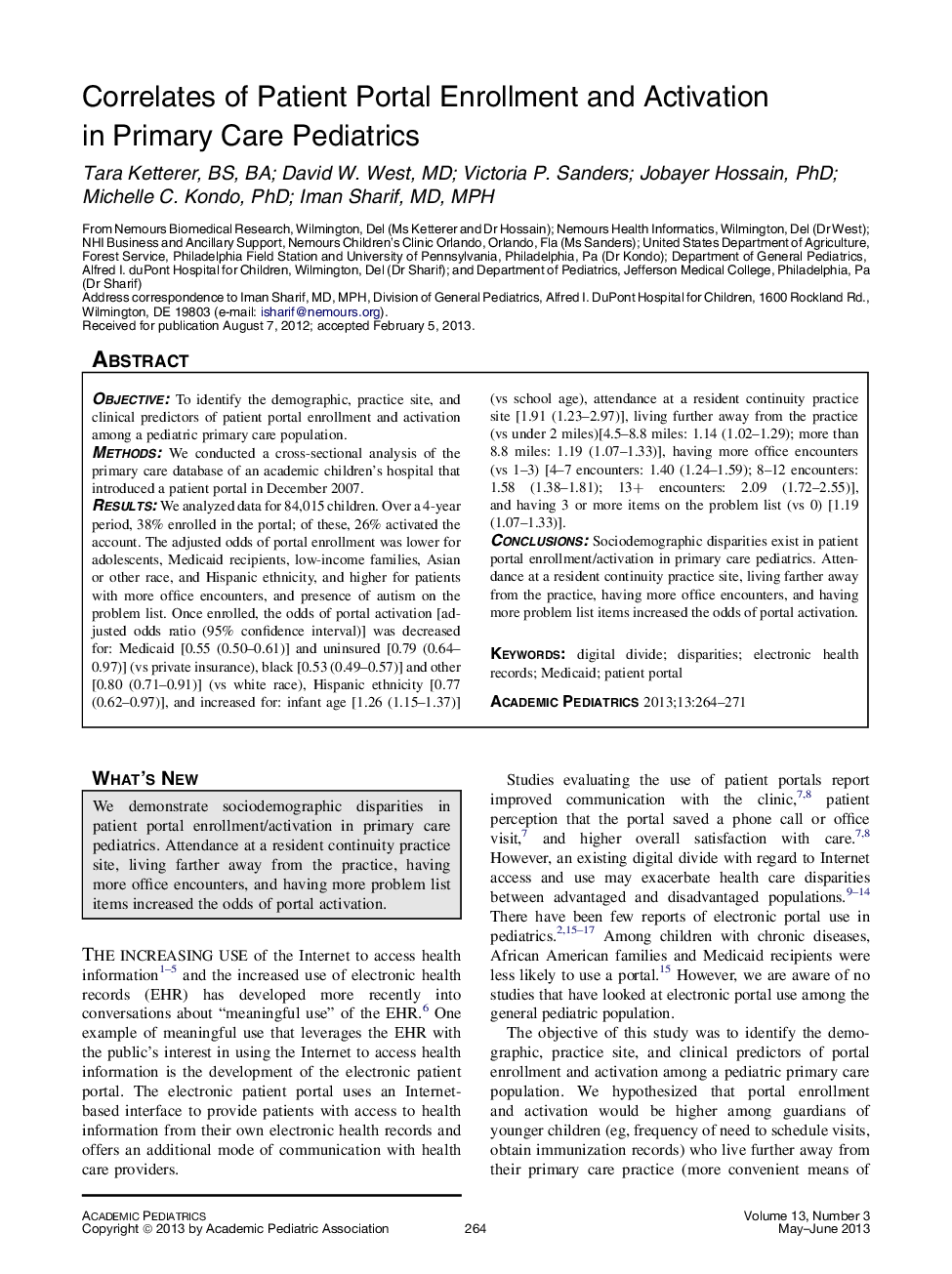| Article ID | Journal | Published Year | Pages | File Type |
|---|---|---|---|---|
| 4139892 | Academic Pediatrics | 2013 | 8 Pages |
ObjectiveTo identify the demographic, practice site, and clinical predictors of patient portal enrollment and activation among a pediatric primary care population.MethodsWe conducted a cross-sectional analysis of the primary care database of an academic children's hospital that introduced a patient portal in December 2007.ResultsWe analyzed data for 84,015 children. Over a 4-year period, 38% enrolled in the portal; of these, 26% activated the account. The adjusted odds of portal enrollment was lower for adolescents, Medicaid recipients, low-income families, Asian or other race, and Hispanic ethnicity, and higher for patients with more office encounters, and presence of autism on the problem list. Once enrolled, the odds of portal activation [adjusted odds ratio (95% confidence interval)] was decreased for: Medicaid [0.55 (0.50–0.61)] and uninsured [0.79 (0.64–0.97)] (vs private insurance), black [0.53 (0.49–0.57)] and other [0.80 (0.71–0.91)] (vs white race), Hispanic ethnicity [0.77 (0.62–0.97)], and increased for: infant age [1.26 (1.15–1.37)] (vs school age), attendance at a resident continuity practice site [1.91 (1.23–2.97)], living further away from the practice (vs under 2 miles)[4.5–8.8 miles: 1.14 (1.02–1.29); more than 8.8 miles: 1.19 (1.07–1.33)], having more office encounters (vs 1–3) [4–7 encounters: 1.40 (1.24–1.59); 8–12 encounters: 1.58 (1.38–1.81); 13+ encounters: 2.09 (1.72–2.55)], and having 3 or more items on the problem list (vs 0) [1.19 (1.07–1.33)].ConclusionsSociodemographic disparities exist in patient portal enrollment/activation in primary care pediatrics. Attendance at a resident continuity practice site, living farther away from the practice, having more office encounters, and having more problem list items increased the odds of portal activation.
